#rizzoli international
Note
Ooh 4 and 10, a forced return and kisses??? Angst central 🥳🥳
I enjoy some angst, especially in bite-sized chunks. @kerfuffle-puffin also asked for 4, so we'll start with that one.
___
4 Kisses where it hurts
Maura’s thoughts are so disorganized that it chokes her. She is used to order, used to the gestalt cognition her autism had previously blessed her with, that her brain injury has taken away. She’s never gotten a diagnosis for the former, no need with her expertise, and the latter had been obvious as soon as her head hit the bar of The Dirty Robber those weeks prior.
Her brain had been so… so good before. So beautiful.
Now, she pulls up BCU’s medical dictionary of health terms just so, you know, she can double check that her pathology reports say what she wants them to. She consults the lowly thesaurus.com so that she can confirm her previously plentiful bank of synonyms without sounding repetitive.
She never sounded repetitive. Oversharing? Sure. Unnecessary reiteration? A lot. But sounding repetitive? Never. Not since she used to repeat things as a little girl just because she liked the way they sounded, how the cadence and the prosody lilted out of her tiny mouth and changed the airwaves around her. Constance had rid her of that, and quickly.
What… what would Mother say now? Now that Maura stares at a computer screen unable to remember the thought she’d started just a few seconds ago. Her fingers had been sure, they’d begun the sentence so quickly, and now she can’t decide if she wanted to talk about the bullet deep to the victim’s left lung or the deep vein thrombosis that would have killed him hours after the bullet entered his chest anyway.
Either way, her head wants to hang and she wants to cry.
“Hey,” a voice she’d never forget even with the most devastating of traumatic brain injuries, all but whispers, dragging her out of her head.
When had Jane stopped in the doorway? Before the concussion and the inflammation and the chiari malformation diagnosis, Maura would have spotted Jane’s march from the elevator to the threshold.
Jane doesn’t give her much time to contemplate though, because as soon as Maura looks up and as soon as Jane sees that Maura’s been weepy, she goes over to Maura’s desk.
She takes Maura’s head in her hands, cradling the thing that has given Maura’s life so much meaning and, recently, so much consternation. Jane looks down, Maura looks up, and then Jane places her lips right in the center of Maura’s forehead. Three kisses. “Looked a little sad,” Jane reasons when she pulls away and Maura’s confusion registers across her face. “Thought I might know what was botherin’ ya. Wanna run through this thing together? I’m a good spell check.”
10 forced reunion
Maura’s heels clap through Boston Regional’s polished halls, and even though it’s not the ICU, her heart hammers just the same. She weaves through residents, nurses, and doctors as rooms blur by her. Gómez, O’Rourke, Mwangi, Jackson… Rizzoli.
She’s made it. From Korsak’s breathless call to her desk phone, to the hurried change out of scrubs and into the outfit she wears now, from the agonizing ascent of the elevator to the driver’s side of her car, she’s thundered across the city to Room 308.
Jane is not supposed to be here.
Jane glowers at the edge of the hospital bed, arm in a sling and face scraped, because she is not supposed to be here.
She is supposed to be deep in the webbing of an extortionist group that had already killed three people. She is supposed to be undercover, with no contact, for the remainder of the week at least. But, on this Monday, she is attempting to leave against medical advice. She was made and she was hustled out of the job gone wrong and she is mad.
Maura pauses in the doorway. Jane’s hair is more wild than usual and someone had been holding ice up to her eye because the gash over it is angry burgundy, but not swollen. It’s still weeping. Its first opening, probably at the hands of a large knife, had stained the front of her shirt. There’s still blood on her neck. It’ll scar, even if someone had bothered to suture it. Maura looks over to the side of the bed, the suture tray still there, with instruments dropped in a hurried mess on it, and realizes someone probably had bothered and been chased away for their trouble.
“I’m glad you’re ok,” Maura chances, dropping her purse on the chair just to the right of the door. For all her bluster outside, she radiates calm now, like she knows no other way to be.
“Oh fuck off,” Jane groans. Maura had expected as much. She doesn’t even flinch. In all their years in each other’s orbit, she’s finally learned that this means to come closer.
Most of the time.
“Is that what you told the physician?” Maura purrs with a little bit of teasing. She purses her lips, but one corner goes up and her eyes dance.
Jane scoffs and turns away. “I’m goin’ home,” she says.
Presumably to lick the proverbial wounds, Maura surmises. She can’t reach that large one with her tongue. “Not before you let me close that. Here. In a hospital. With antiseptic.”
The doctor had even been kind enough to leave his stool, the padded one with the wheels so common to hospitals, and Maura brings it over, along with the tray. She goes to the wall, pulls a few nitrile gloves from the station next to the charting board, and then takes her seat.
“I’d rather not,” Jane finally grumbles.
“I don’t care,” Maura tells her. “I care that you’re safe, and mostly intact. I care that your job spared your life - again. Though I know at any moment it could tear it away,” The frenetic heartbeat of the hallway returns, and this time her voice shakes. She won’t cry, though.
“This isn’t how I wanted to see you again. This wasn’t how it was supposed to be. I was supposed to come back a winner,” Jane argues. Maura hears her voice shake, too, but not with tears. She holds the collection tray up, looks Jane in the eye, then nods to it.
Jane knows what to do. She spits the amalgam of phlegm and blood into it. Maura doesn’t flinch, doesn’t grimace, doesn’t gag. She just puts it down and hands Jane some gauze. “That is irrational of you,” she says to Jane. When Jane glares, she smiles. “It is. You have the best closing rate in the state. You are always a winner and one case isn’t going to alter that. You are mad because you are obsessive and you are filled with such… oh. Such vengeance. Try to stay still. I’m going to flush the wound,” Maura pauses her speech to squeeze the cold saline solution into Jane’s wound.
“Agh fuck,” Jane snarls, but to her credit, she stays put.
“You’re mad because you haven’t released the valve in awhile,” Maura continues. She rubs antiseptic around the cut before she pulls out the needle and thread. Jane won’t want the anesthetic because Jane needs to feel something. “And I keep telling you that there are safer, healthier, more enjoyable ways to do that, but you don’t listen.”
Jane says nothing. She lets Maura sew her up.
“Jane?” Maura calls with a small smile, because it’s been a few seconds and Jane is blushing.
“Not ready yet,” Jane rushes out in one quick breath.
“Well, I am,” Maura says. Her next tug is particularly forceful and it jerks Jane’s head closer to Maura’s chest. “And so I don’t mind waiting for you to be. But what I have planned is a lot better than a through-and-through and a forced reunion, so you may want to hurry up.”
Jane responds with a chuckle and white knuckles against her own knees. “Oh, fuck off.”
#ask anthrofreshtodeath#otp prompts april 2023#rizzoli and isles#lauren writes rizzoli and isles fanfiction#also hey self-diagnosis is valid but if you suspect you have a disability its always a good idea to confirm that medically#so that you can have access to some resources that are out there#I headcanon maura as having way too much internalized ableism and stubbornness to do so however 💀
30 notes
·
View notes
Text






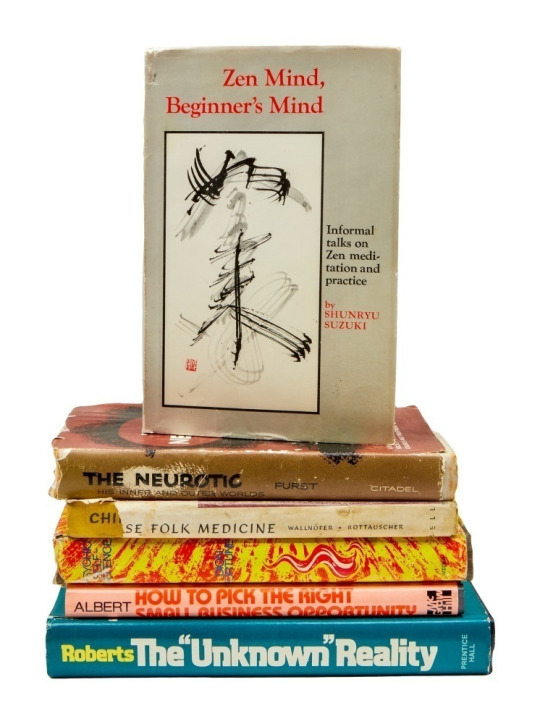
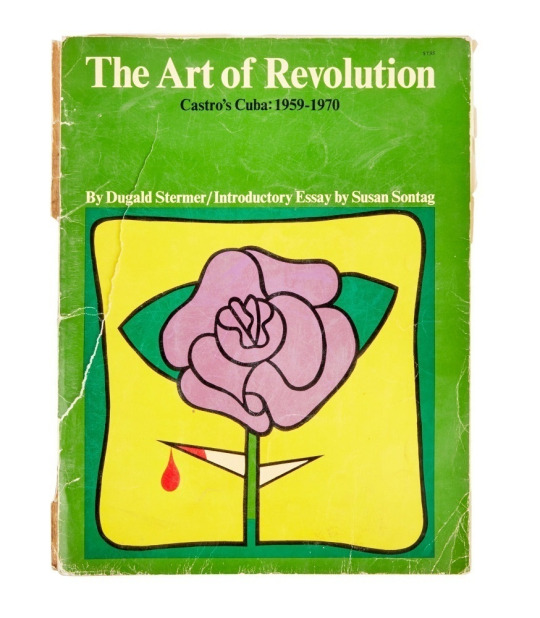
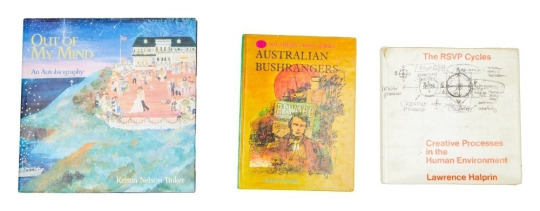
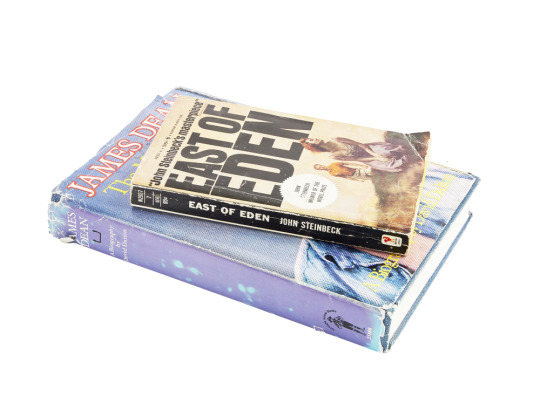


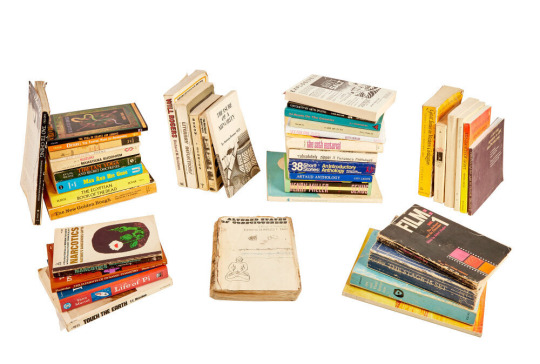
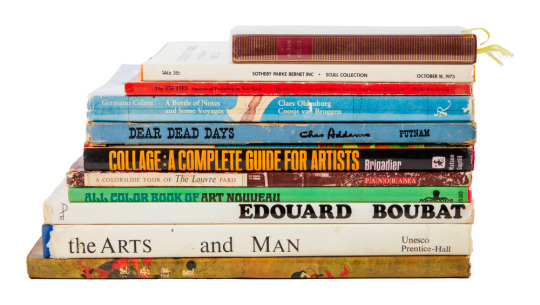

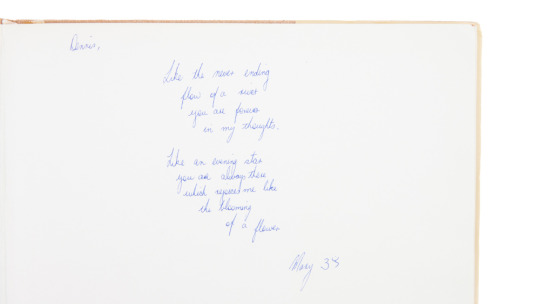
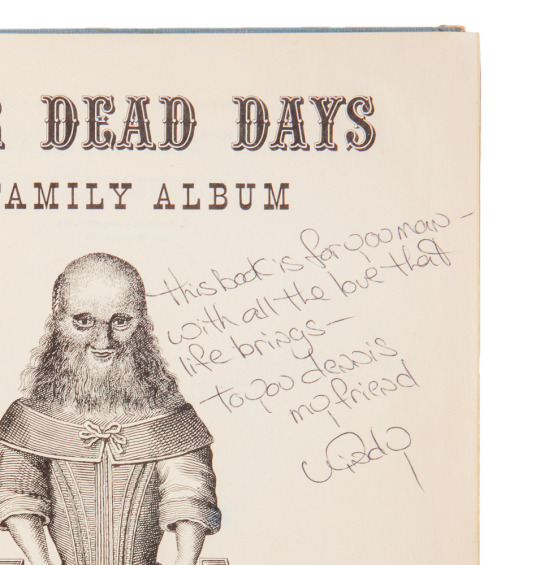
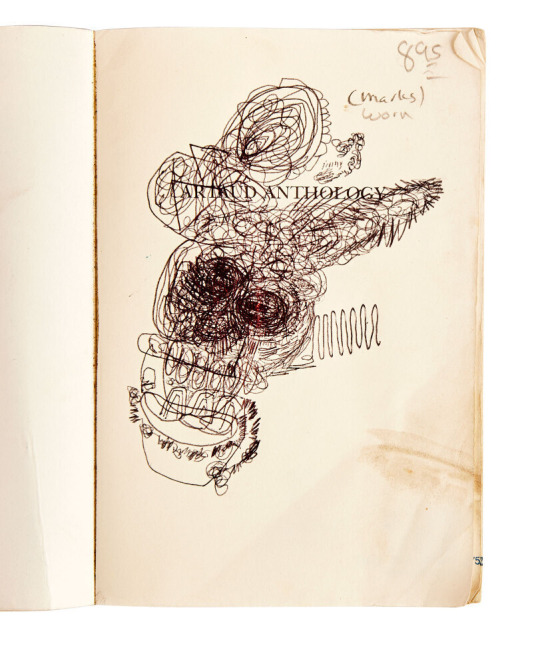
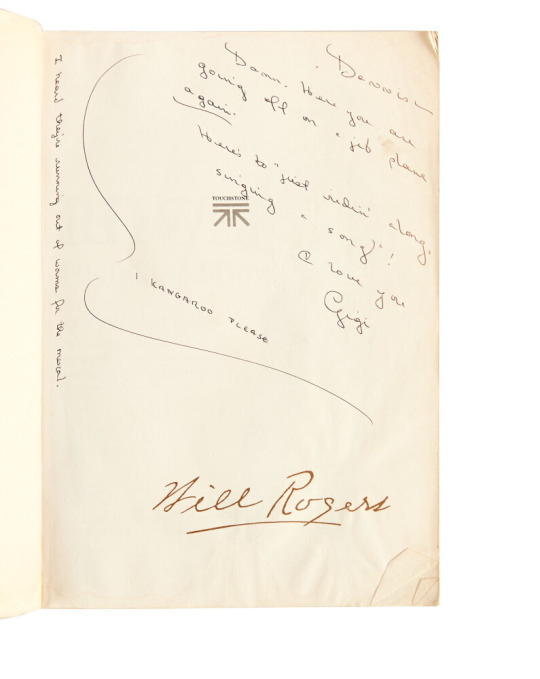
Dennis Hopper's collection of owned and gifted books
(a few are listed under the cut)
Islands in the Stream (Charles Scribner's Sons, 1970)
Magic (Delacorte Press, 1976)
Sneaky People (Simon and Schuster, 1975)
Strange Peaches (Harper's Magazine Press, 1972)
I Didn't Know I Would Live So Long (Charles Scribner's Sons, 1973)
Baby Breakdown (The Bobbs-Merrill Company, Inc., 1970)
37 (Holt, Rinehart and Winston, 1970)
Presences: A Text for Marisol (Charles Scribner's Sons, 1970)
Little Prayers for Little Lips, The Book of Tao, The Bhagavadgita or The Song Divine, and Gems and Their Occult Power.
Lolita (G.P. Putnam's Sons, 1955)
The Dramas of Kansas (John F. Higgins, 1915)
Joy of Cooking (The Bobbs-Merrill Company, 1974)
The Neurotic: His Inner and Outer Worlds (First edition, Citadel Press, 1954)
Out of My Mind: An Autobiography (Harry N. Abrams, Inc., 1997)
The Savage Mind (University of Chicago Press, 1966)
Alive: The Story of the Andes Survivors (J.B. Lippincott Company, 1974)
The Documents of 20th Century Art: Dialogues with Marcel Duchamp (Viking Press, 1971)
The Portable Dorothy Parker, A Portrait of the Artist as a Young Man, I Ching, and How to Make Love to a Man.
John Steinbeck's East of Eden (Bantam, 1962)
James Dean: The Mutant King (Straight Arrow Books, 1974) by David Dalton
The Moviegoer (The Noonday Press, 1971)
Erections, Ejaculations, Exhibitions and General Tales of Ordinary Madness (City Light Books, 1974)
Narcotics Nature's Dangerous Gifts (A Delta Book, 1973)
The Egyptian Book of the Dead (Dover Publications, 1967)
Tibetan Yoga and Secret Doctrines (Oxford University Press, 1969)
Junky (Penguin Books, 1977) by William S. Burroughs
Weed: Adventures of a Dope Smuggler (Harper & Row, 1974)
Alcoholics Anonymous (Alcoholics Anonymous World Services, 1976)
Skrebneski Portraits - A Matter of Record, Sketchbooks of Paolo Soleri, and High Tide.
Raw Notes (The Press of the Nova Scotia College of Art and Design, 2005)
Le Corbusier (Heidi Weber, 1965)
Henry Moore in America (Praeger Publishers, 1973)
Claes Oldenburg (MIT Press, 2012)
Notebooks 1959 1971 (MIT Press, 1972)
A Day in the Country (Los Angeles County Museum of Art, 1985)
Album Celine (Gallimard, 1977)
A Selection of Fifity Works From the Collection of Robert C. Scull (Sotheby Parke Bernet, Inc. 1973)
Collage A Complete Guide for Artists (Watsun-Guptill Publications, 1970)
The Fifties Aspects of Painting in New York (Smithsonian Institution Press, 1980)
A Bottle of Notes and Some Voyages (Rizzoli International Publications, 1988)
All Color Book of Art Nouveau (Octopus Books, 1974)
A Colorslide Tour of The Louvre Paris (Panorama, 1960)
Dear Dead Days (G. P. Putnam's Sons, 1959)
Woman (Aidan Ellis Publishing Limited, 1972)
The Arts and Man ( UNESCO, 1969)
Murals From the Han to the Tang (Foreign Languages Press, 1974)
A (Grove Press Inc., 1968)
Andy Warhol's Index Book (Random House, 1967)
Voices (A Big Table Book, 1969)
Another Country (A Dell Book, circa 1960s)
On The Road (Signet, circa 1980s)
56 notes
·
View notes
Text
“I would have done that for you,” Jane says.
Maura blinks away a few tears and looks from her television to Jane. The end credits of Thelma & Louise continue to scroll as the wistful strains of the soundtrack fill Maura’s Beacon Hill living room. The two women are already dressed in their pyjamas, way past the point of pretending Jane would ever go home after drinks and a movie.
“What?” Maura asks.
Jane nods her head at the television, stone faced, eyes still glued to the screen. “I would have done that for you. I almost did.”
Maura watches Jane carefully and Jane resolutely does not look back at her. She sits slouched down on the couch, her socked feet kicked up on the coffee table, long arms folded across her chest.
Maura understands exactly what Jane is telling her, but she wants Jane to look at her when she says it so she willfully misunderstands.
“You almost drove me off a cliff?”
Jane shoots her an irritated glance. Her features are set in hard lines, but her eyes give her away. They glisten ever so slightly, betraying her vulnerability. Under ordinary circumstances, Maura would tease Jane for getting so emotional over what she repeatedly insisted was an action movie, but something tells Maura these are not ordinary circumstances.
“I would have kept us from the cops.”
Jane says ‘the cops’ like that’s a separate thing from her, like it isn’t exactly what she is, and picks at a small hole in the threadbare sweatpants she’s wearing. Maura says nothing, which is a trick she learned from Jane’s interrogation tactics, an attempt to force the other person to fill the silence.
“I was going to do it,” Jane continues. “I had it all planned out. There was a moment. I had a window of opportunity when I knew we would arrest you but no one had said it out loud yet. I almost came here to take you away with me.”
Maura puts everything she has into repressing a shiver at Jane’s choice of words. She wets her lips and chooses her words carefully.
“That would have been foolish, Jane. I wouldn’t want you to blow up your life if I’d committed a crime.”
“You hadn’t committed a crime, though.”
“If you wanted to run away, I think you might have been worried that I had.”
Jane very firmly shakes her head no. “I didn’t think you did it, but I was worried we couldn’t prove it without you. And as good as Susie is, I don’t think we could have if you hadn’t helped from jail.” She looks over at Maura, making sustained eye contact for the first time since she started talking. “I never believed you did it, Maur. Not for one second.” The look in Jane’s eyes is fierce and Maura has no choice but to believe her. “But even if you had, I wouldn’t care.”
“Jane, are you seriously saying you wouldn’t care if I’d killed that man?” Maura is already convinced but she cannot help the thrill she gets from making Jane insist further.
“I know you, Maura.” Jane looks irritated. “It would have been self-defense. Just like the movie.”
Maura tilts her head to one side. “I mean, it wasn’t really. Louise had already rescued Thelma and there was no longer an immediate threat of harm. Louise was right to run from the law; she would certainly have been found guilty.”
Jane frowns and Maura knows the moral debate that wages internally. Maura remembers the Massachusetts Marathon and Jane’s comment about wanting to allow the killer to finish the job. She remembers how Jane wasn’t especially bothered when they couldn’t figure out which teenage girl had actually murdered their rapist driver's education instructor and instead had to let them all go free. She remembers Charles Hoyt.
“Louise didn’t have to kill him,” Jane concedes. “But he deserved it.”
“But she committed a crime,” Maura says.
“Sometimes you have to.” Jane folds her arms across her chest once again and shrugs. “If Ma had given me that recording, I would have gotten rid of it. I wouldn’t have thought twice.”
“And then what, Jane? You would have had a felony conviction. You wouldn’t have been able to work as a detective. Any good job would have been difficult to find.” It’s incredibly stupid, but Maura is aroused by the notion that Jane would throw away her life’s work for her. She absolutely hates it when Jane behaves recklessly but it also, quite unfortunately, makes her hot.
Jane grins wryly. “I guess I was banking on my super rich best friend taking care of me after I went to jail for her.”
“I would,” Maura says quickly. Perhaps too quickly, judging by the sharp arch of Jane’s eyebrow, but she can hardly help it. Maura is involved in a wide range of charitable endeavors, but given the opportunity, turning Jane Rizzoli into a kept woman would barrel into first place as her number one most devoted cause. The idea of living with Jane, taking care of Jane, dressing Jane is almost too much to bear. Against her better judgment she indulges for just a moment and a vignette plays in her mind of having Jane fitted for a bespoke suit, of tucking some spending money into the breast pocket with a kiss and a wink. She looks down into her wine glass and finishes the rest in one long swallow, hoping that the stain of red she can feel across her cheeks will pass as being flushed from alcohol.
Seemingly oblivious (or perhaps willfully ignorant) to the elaborate domestic and financial fantasy playing out in Maura’s mind, Jane continues.
“Besides, if I’d trashed it, the only person who could have ratted me out was my mother. She wouldn’t do that to me.” Jane scowls. “And she shouldn’t have done that to you. You’re her family.”
Maura considers making a glib remark about how in Massachusetts there’s one very easy way to make that last statement factually true, but humour isn’t her strong suit and now is not the time to flub the landing on a joke.
“So does that make me Louise? Since I was the one at risk of going to prison?”
“What?” Jane looks sincerely offended. “I’m obviously Louise.”
“I don’t know, Jane,” Maura muses. “You’re the tall one.”
“Yeah, Maur. That’s definitely the defining quality we should use to determine this. Please be real.”
Sure, Maura can be real. She gives Jane a long look.
“You know, Louise kisses Thelma.”
Jane goes quiet.
Maura decides she’s had enough. She’s been up at the edge of this cliff too many times and she’s never hit the gas. She places her wine glass down and in one swift move she gets to her knees on the couch, pivots on one leg, then swings her other over Jane’s thighs to take a seat on her lap. It’s a risky maneuver but it has the benefit of pinning Jane in place, which is always a difficult task.
Jane looks up in surprise and goes very still.
Maura doesn’t move either.
She thinks about the time she had gone hiking in the French alps and came face to face with a deer. It had been an incredible experience to see one up close, the European red deer much larger and more majestic than its North American counterpart. Maura had frozen immediately upon seeing it and the deer had slowly approached her, but then Maura had ruined everything by reaching for her camera. She wouldn’t be making that mistake again.
After several agonizing moments, Jane unfolds her arms and places her hands on the outside of Maura’s thighs, just below her hips. Maura can feel Jane’s hands tense, as if about to take a firm hold. She briefly wonders if she has miscalculated and Jane is about to direct her out of her lap, but then Jane’s hands relax.
Their relationship is strange enough that if Maura simply dismounts without anything else happening, they can probably pretend this didn’t happen and continue on exactly as they have been.
“I read that it wasn’t in the original screenplay,” Maura says conversationally, just as she would if she wasn't straddling Jane. “Did you know that? It was Susan Sarandon’s idea, allegedly. It was the final shot on the final day of filming and Sarandon said to Geena Davis, ‘you know, I’d really like to kiss you.’”
Maura places her hands on Jane’s stomach. Jane has leaned her head back against the couch and is staring intently at Maura with dark, unreadable eyes. She hasn’t spoken a word. Maura wonders if Jane is also employing interrogation tactics or if she truly has nothing she wants to say.
“So no one planned for it,” Maura continues, her voice just a little bit softer than before. She looks down at her hands, splaying out her fingers against Jane’s abdomen. She can tell Jane is flexing, can feel that glorious muscle definition beneath her fingertips. Is Jane doing it for her benefit? She doesn’t resume speaking until she feels Jane relax again. “No one had in mind that they would kiss when the script was written, or when they started casting it; it didn’t occur to anyone almost the entire time they were filming. It was just a story about two best friends.”
Maura looks up from her hands and is almost surprised to find Jane still looking right at her. She was expecting awkwardness and avoidance by this point. It makes Maura a little more brave and she forges ahead.
“I think it’s still a tremendous film, even if the kiss doesn’t happen. If it’s a movie about female friendship, about two women who protect each other at all costs—I think that’s a special, wonderful movie.” Maura pauses just a moment before continuing. “But you know what, Jane?”
It takes Jane so long to respond that Maura sincerely wonders if she might not do it at all. But eventually Jane’s lips part and her voice emerges as barely more than a wisp of smoke, delivering the first word she’s spoken in several minutes.
“What?”
Maura takes a deep breath through her nose.
“I like that they kiss.”
Maura tries her hardest to maintain eye contact but despite her best efforts, her gaze drops to Jane’s lips and she licks her own.
Jane doesn’t respond, doesn’t move.
Maura is undeterred.
“I like that they could have everything they had with each other, and then just a little bit more,” she says, drawing her eyes back up to Jane’s. “I don’t think it alters the movie at all. It doesn’t recontextualize everything that came before it. They’re the same two people they were before it happened because the kiss just makes sense. It just…fits.”
Maura thinks it’s really quite obvious what she’s doing but Jane continues to stare at her with that indecipherable look in her eyes and Maura’s trying not to panic because she is way out on this limb. She has been sitting in Jane’s lap for several minutes now and in that entire time Jane has uttered one single word.
“I’d really like to know what you think about it, Jane,” Maura says quietly. “Do you think it improved the film? Or do you think the story would have been just fine the way it was?” She wants this to be a genuine hypothetical question, but she knows that a little bit of sadness takes root in her voice when she offers Jane the escape route.
Instead of a response to her question, Maura feels Jane’s abdominal muscles tighten beneath her fingers, announcing the other woman’s intention to sit up just a split second before it’s happening. Maura quickly removes her hands from Jane’s stomach, lest they get trapped between their bodies, and wonders if this is a signal that she should get off. She must also have tensed up in preparation for movement, because Jane’s hands quickly slide around from Maura’s upper thigh to grip the swell of her ass, pulling her close, unambiguously holding Maura in place against her torso.
Maura’s arms need to go somewhere, so she leans her arms on Jane’s shoulder, her forearms crossed at the wrist behind Jane’s head.
With anyone else, the intimacy of this position would send a crystal clear message, but Maura has been forced to write off so many other situations as platonic that she is somehow still afraid of moving too quickly.
“Why do you think Louise kisses Thelma?” Jane asks.
If it weren’t for how close they are, which is very, Maura would be irritated that Jane has answered a question with another question. She’s really not in the mood for the Socratic method, but Jane’s face is tilted up at hers and their mouths are close enough that she can almost feel the pop of Jane’s consonants against her lips, so she decides to let it slide.
“I think Louise had no other way left to express what she was feeling. She’d already killed a man to let out what was inside of her, so what else was left but a kiss?” Maura is aware she might be flying too close to the sun now, implying a similarity between Louise killing Harlan and Jane killing Hoyt. They never really talked about it, but despite her aversion to speculation Maura is pretty certain that Jane killed Hoyt as much for Maura as for herself. Maura looks carefully into Jane’s eyes, which stare at her so seriously, pupils blown out so far as to look almost entirely black. She can feel the rise and fall of Jane’s steady breathing where their chests are pressed together, while her own is halting. She wonders how Jane can possibly be so calm.
“I also think…” Maura continues carefully. “I think perhaps Louise was always drawn to Thelma, but maybe she didn’t understand exactly in what way, or maybe she did and she was worried it was one-sided. But then at the end, when she sees that Thelma would rather have one more moment of freedom with Louise than turn back, she finally knows.” Maura draws one hand back from around Jane’s neck to ever so gently cradle her jaw, brushing the pad of her thumb just below Jane’s lower lip.
But you know I don’t like to guess,” Maura says softly and she catches just the faintest hint of a smile across Jane’s features, barely more than the slightest crinkle around her eyes. “What do you think, Jane?”
“I think Louise waited too long.”
Jane closes the negligible distance between them, the hair’s breadth that is both insignificant and profound, and presses her lips to Maura’s.
It is nothing short of spectacular. Better than any kiss that tastes like red wine and stovetop popcorn has a right to be. A jolt of arousal travels up Maura’s spine and her head spins. Jane’s lips are softer than Maura expected they would be, considering she’s never seen the woman apply lip balm in all the years she’s known her, and she had been so sure it would be hesitant but Jane is kissing her confidently, with intent.
To her enormous chagrin, Maura is out of breath bare seconds into the kiss, her nerves rendering her breathing too shallow, but she presses on until her lungs absolutely scream for oxygen and she’s forced to pull away. Right away she’s terrified that somehow this will be the only kiss and she has cut it short because she couldn’t regulate her breathing, a task so simple that a body does it subconsciously. She is suddenly at war with her autonomic nervous system.
She pulls in a broken, shuddering breath and it is so loud and she is so worried about letting on how much this means to her, how badly she has wanted it, because it seems impossible that the intensity won’t scare Jane away. Maura is absolutely, unequivocally desperate for it but if she has to pretend this is just a little kissing between best friends she’ll do it, just to have this for a moment.
She considers trying to make a joke, demonstrating that this really is no big deal, but before she can do anything that stupid Jane’s right arm is wrapping tightly around her waist and her left hand is in Maura’s hair, around to the back of her head, drawing her back down for another kiss. This time Maura manages to take a deep breath.
Surely, now, she can stop pretending that this isn’t everything she wants in the world. She winds her arms tightly around Jane as they tilt their heads in complimentary directions, deepening the kiss. Jane’s hand slips beneath the hem of Maura’s shirt, presses her palm against her bare back, and Maura parts her lips in surprise. Jane slips in, her tongue caressing and withdrawing in an evocative rhythm that truly leaves Maura no choice but to moan into Jane’s mouth and grind her pelvis against Jane’s stomach.
Jane draws back and Maura makes no effort to hide her whimper at the loss. Jane’s eyes search hers questioningly, except Maura has no idea exactly what question Jane is trying to ask. She gives every possible answer she can think of.
“Yes. All of it. Everything. Since always.”
“Are you sure?”
Jane’s voice is hoarse. Maura isn’t sure if she’s quoting the movie on purpose but the dialogue certainly fits, because once Jane drives their car off this cliff, there will be no turning back and Jane needs to be certain.
“Yes, Jane,” Maura laughs breathlessly. “Yes.”
She lowers her face to Jane’s and just barely touches their lips together. It’s not quite a kiss. Maura just wants Jane to feel her next words as much as she hears them.
“Let’s keep going.”
#rizzles#rizzoli & isles#rizzoli and isles#ao3#f/f fanfic#fanfiction#fanfic#femslash#f/f#jane rizzoli is louise sawyer reincarnate#except louise would never be a cop#doomsdaydj fanfic
50 notes
·
View notes
Text
The Cactus Metaphor for Jane Rizzoli
Jane Rizzoli is not a simple character. The narrative doesn't shy away from regarding her as complex and recognizing her internal world doesn't match her external posturing. One of the most interesting ways it does this is through a metaphor comparing Jane to cacti/succulents.
This actually starts with Hoyt right in the pilot when he sends her a coded message with some succulents after escaping prison. He writes, "Prickly on the outside, succulent on the inside, just like you." Which is kinda gross coming from him specifically, but actually quite revealing of Jane's character.

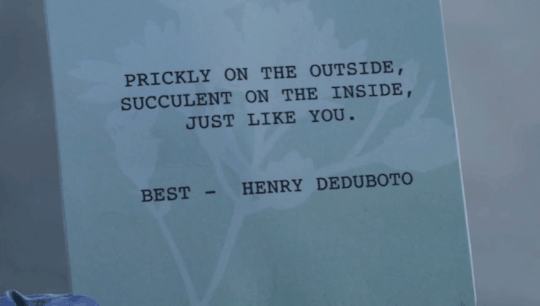
Many of the characters reiterate similar beliefs about Jane all through the first season, saying she's softer inside or cares very much despite the front she puts up.
But we don't know if Jane feels this way about herself or not until Alice Sands burns down Jane's apartment in season six and she moves into a new one Maura arranges for her. In this exchange, the cactus comes back (better).

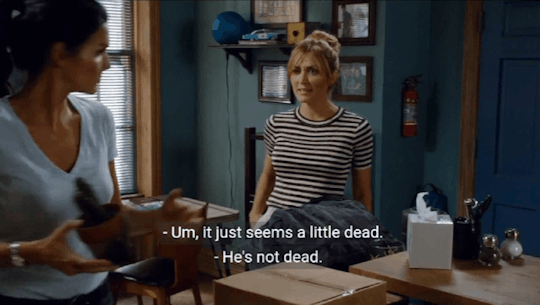

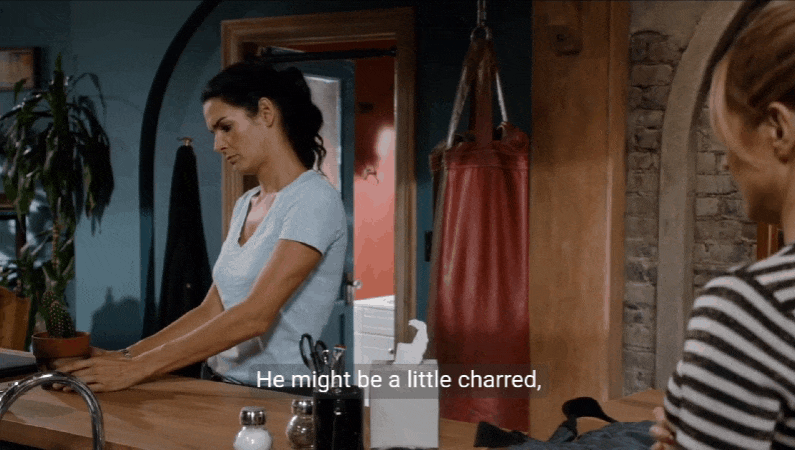
Jane's imprinted on that cactus. She's not only mildly personified it, calling it by a pronoun usually associated with sentient things, but she also clearly sees it as representative of herself. It's obvious just by how offended she is at the idea of it being dead, then the careful way she speaks about it that may as well be speaking about herself.
And here she is saying she's still got fight in her after all she's been through. She's saying she's made it out mostly her full self and intact. She kind of takes back the power of the cactus. The way Hoyt talks about it is to point out her vulnerability and demean her, something like "you think you're big and strong, but I know you have something soft and weak inside that I can break." And now, after Alice, Jane is finding resilence and perserverance in the cactus. Gosh, it's kind of beautiful.
And to make it even better, Maura's just... she just loves Jane so much because this is how she follows up her little flub:

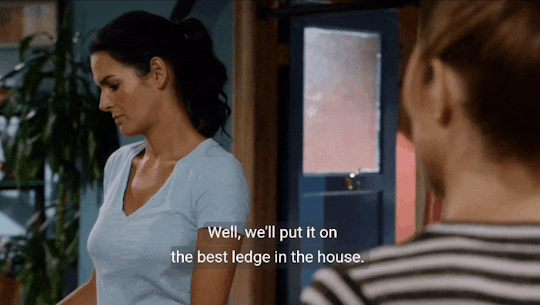
Just... awwww. I love this conversation they're having without even having to say anything. Maura can be talking about a cactus and telling Jane she's got backbone and that she's still strong and whole and standing. Canon likes to tell us Maura's not good at reading social cues, but she almost always reads Jane. And here, she's noticed that Jane isn't just talking about a cactus. She's giving Jane a place of honour with that promise to display the cactus in the open. And it is absolutely love. Because she sees the soft sides of Jane all the time. Those spines don't shield from her anymore. And she still locates strength in them instead of weakness.
#rizzoli and isles#jane rizzoli#maura isles#rizzles#some jane character study#because god i love this show and this ship#and i will take minute details and overanalyze them until i completely run out
129 notes
·
View notes
Text


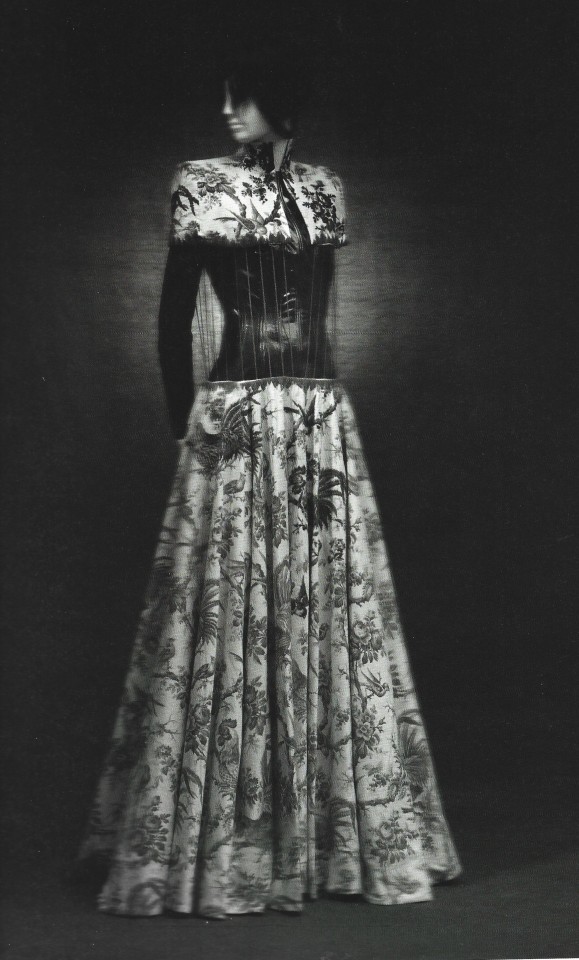

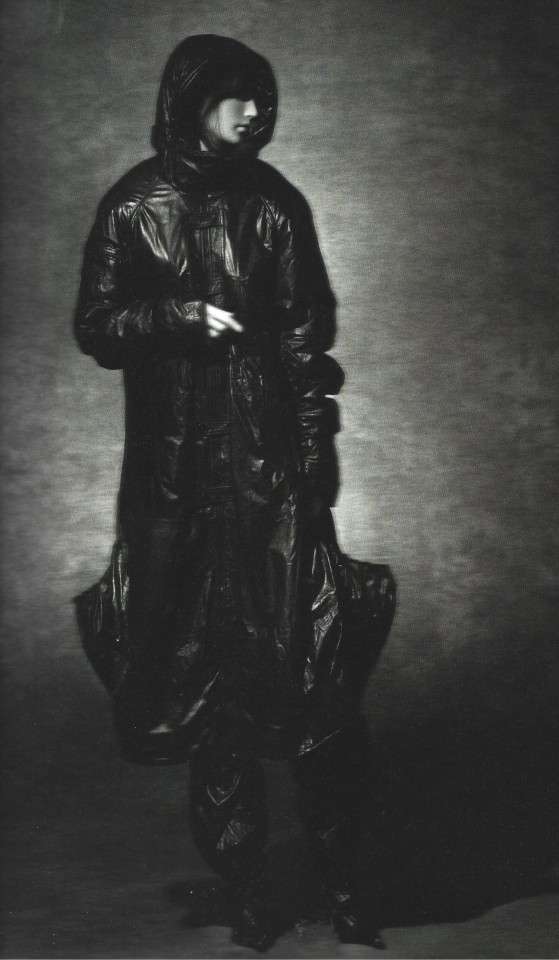
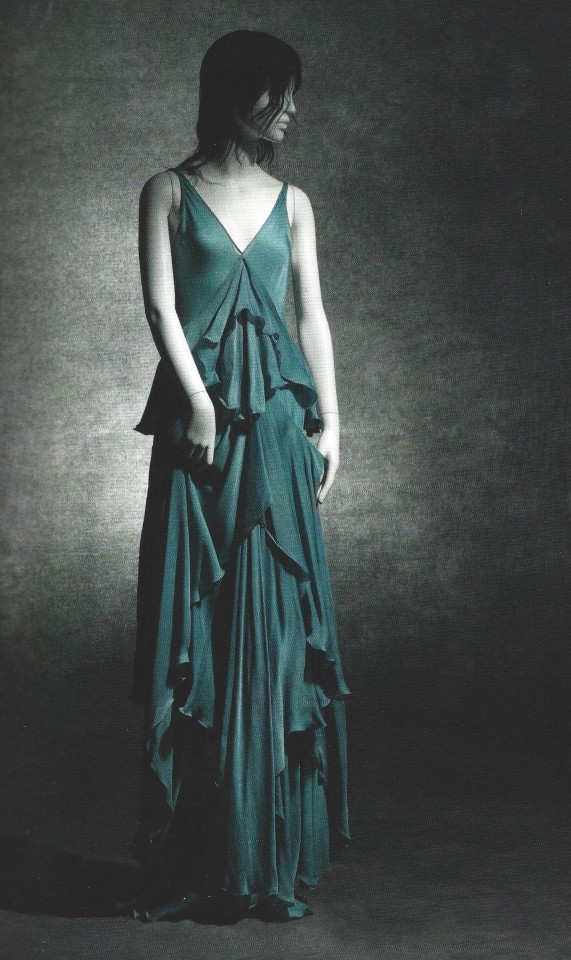


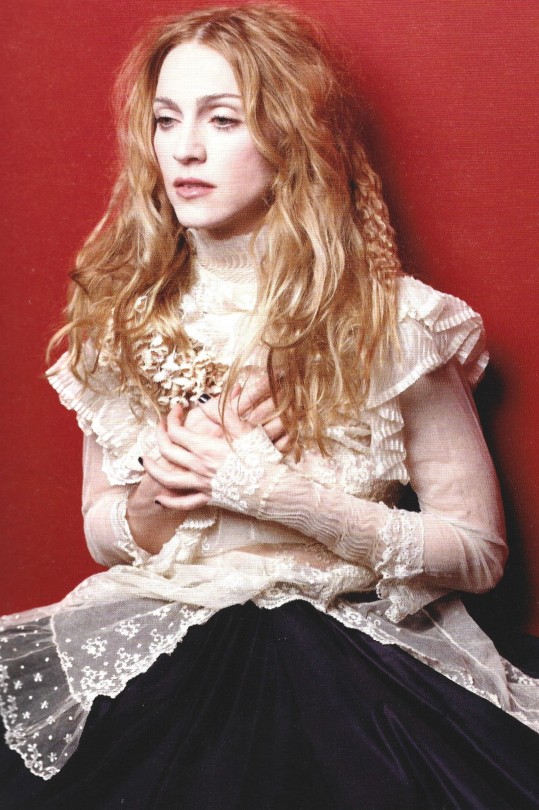

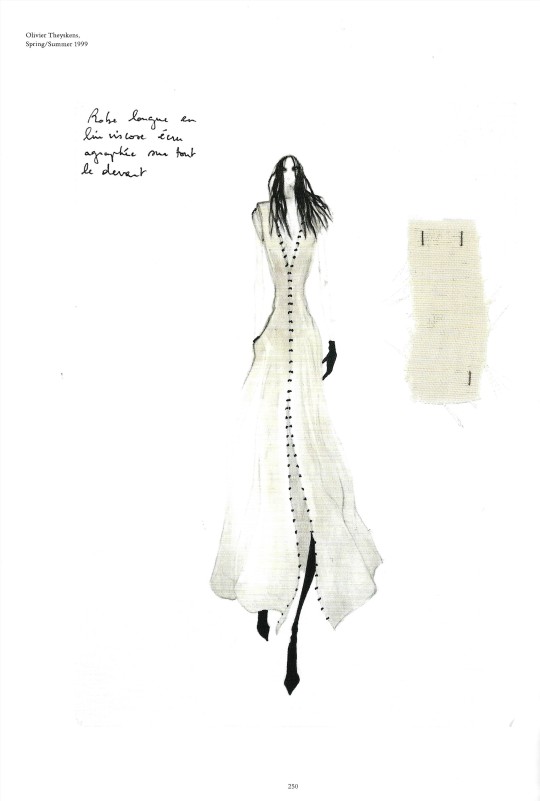

Olivier Theyskens She walks in beauty
Kaat Debo, Elisa De Wyngaert, Vanessa Friedman, Lydia Kamitsis, Wim Mertens
Rizzoli Electa, New York 2018, 272 pages, 22x30cm, ISBN 978-0-8478-6246-7
euro 38,00
email if you want to buy [email protected]
The first complete monograph on Olivier Theyskens surveys his twenty-year career and documents the highly anticipated return of his eponymous label.
Olivier Theyskens’s refined sensibilities earned him international acclaim as the dark prince of late 1990s couture. From his first saturnine collections, to his new vision for Rochas, to his patterns and textiles at Nina Ricci, to his years designing for Theyskens’ Theory, the designer has proved himself a master of couture, semi-couture, and prêt-à-porter. Celebrated for his fine tailoring, romantic silhouettes, and gothic palette, Theyskens transforms each house he helms. This distinctive volume charts the twenty-year development of an extraordinary aesthetic vision, rendered across countries, cultures, and the shifting sands of the fashion landscape.
Newly commissioned texts connect the threads of the Belgian-born artist’s diverse practice. Drawings created for the publication accompany photography from each period of his career. At both Rochas and Nina Ricci, the designer crafted ethereal garments with unorthodox silhouettes, mixing sheer fabrics and old-world bustles with subtly subversive punk elements. Theyskens then broke ground in 2011 with his trailblazing partnership, Theyskens’ Theory. With a special focus on the designer’s return to the runway at the head of his own line, this is the definitive work on a fashion visionary who, like the girls he designs for, changes form, but walks in beauty wherever he goes.
10/11/23
13 notes
·
View notes
Text


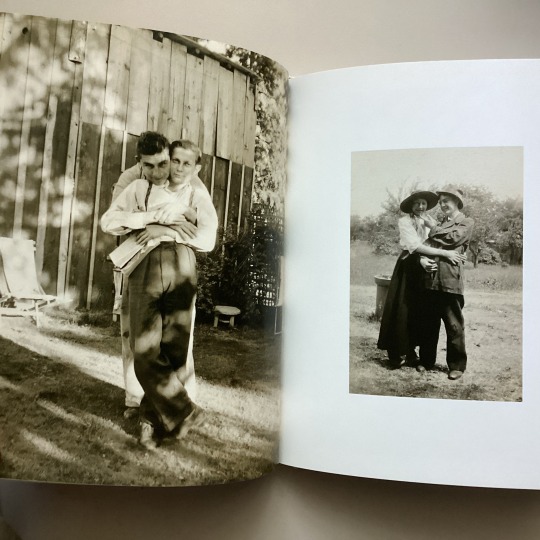
A collection of vintage photographs of gay and lesbian couples from 1900 to 1960 celebrates love and pride during a period when coming out was risky. These photographs show couples posed in hand in hand and embracing each other with happiness. Happy Pride Month!
Invisibles : vintage portraits of love and pride
Author / Creator
Lifshitz, Sébastien, 1968-
New York : Rizzoli International Publications, 2014.
English
Complemented by (work) Invisibles (Motion picture : 2012)
HOLLIS number: 990141600230203941
#LGBTQIAPridemonth#Pridemonth#LGBTQIA#LGBTQ#LGBTQIA+#LGBT#Vintagephotographs#sebastienlifshitz#love#loveandpride#LGBTQhistory#LGBTQIAhistory#queerhistory#Photography#HarvardFineArtsLibrary#Fineartslibrary#Harvard#HarvardLibrary#harvardfineartslibrary#fineartslibrary#harvard#harvard library#harvardfineartslib#harvardlibrary#photography
85 notes
·
View notes
Note
also! is there any particular book in your collection that's your favorite?
Classic Decorative Details, 1994
Henrietta Spencer-Churchill, Rizzoli International Publications, Inc.
Living Barns: How to Find and Restore a Barn of Your Own, 1984
Ernest Burden, Bonanza Books, distributed by Crown Publishers, Inc.
Classic Country Style And How to Achieve It, 1990
Mary Trewby, A Bulfinch Press Book
Traditional Country Style, 1991
Elizabeth Wilhide, Universe Publishing, New York
The Cottage Book, 1989
Richard Sexton, Chronicle Books, San Francisco
49 notes
·
View notes
Text

Lee Thompson Young (February 1, 1984 – August 19, 2013) was an actor who began his career as a teenager, playing the titular character on The Famous Jett Jackson. Major roles included playing Chris Comer in Friday Night Lights and Boston police detective Barry Frost on Rizzoli & Isles.
At age ten, he portrayed Martin Luther King Jr. in a play called A Night of Stars and Dreams by Dwight Woods, and the Phillis Wheatley Repertory Theater of Greenville, South Carolina. It was then that he decided he wanted to become an actor.
He starred in Johnny Tsunami. Although the movie was successful, he did not reprise the role in the sequel, Johnny Kapahala: Back on Board.
He had guest spots in The Guardian and a part in Redemption: The Stan Tookie Williams Story. He appeared in South Beach, and he portrayed Victor Stone in Smallville.
He appeared in the feature film Akeelah and the Bee. He played National Guard rookie, Delmar, in The Hills Have Eyes 2. He played a cocky surgical intern in Scrubs.
He played the role of Al Gough, an FBI agent, in FlashForward. His last acting role was playing Barry Frost on Rizzoli & Isles, and he made an appearance on The Good Guys as the brother and business partner of an arms dealer.
He graduated with honors from USC, where he majored in cinematic arts and was a member of the Kappa Alpha Psi Fraternity. He enjoyed writing and wrote the screenplay for the short film Mano. #africanhistory365 #africanexcellence #kappaalphapsi
2 notes
·
View notes
Text
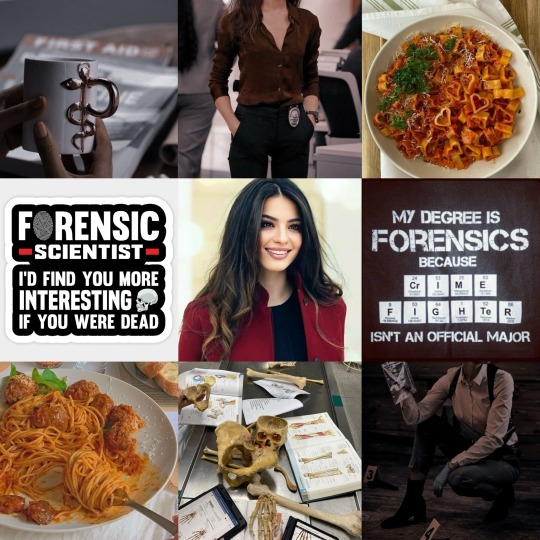
Introducing: Chelsea Hall
Fandom: Rizzoli & Isles
Face Claim: Melisa Pamuk
Full Name: Chelsea Ann Hall
Nickname/Alias/Pet Names: Chels
Age: 30
Myers Briggs Type: ISFJ
Hogwarts House: Ravenclaw
Love Interest: Angela Rizzoli
Occupation: Medical Examiner In Training
Collections: International Menus
Style/Clothing: She’s kind of like Maura in her style. Usually pretty polished, sometimes overdressed. But she can keep things casual too. Catch her in pretty colored sweats at home.
Signature Quote: "I’ve never been a good cook. Put me in a lab and I’m fine. A kitchen? Disaster."
Plot Summary: Everyone at BPD is a bit surprised when Maura takes on an apprentice, but Chelsea Hall fits in pretty well with the department all in all. She’s dedicated to her studies and can often be found having late night discussions with Maura and even crashing on her couch some nights. It’s only when Chelsea starts catching feelings for Angela that Jane starts to mistrust her. Chelsea's feelings are entirely genuine but she doesn’t want them to jeopardize her place at BPD, so she’ll either have to convince Jane of her intentions or give up her chance with Angela in order to maintain the peace.
Forever Tag: @arrthurpendragon, @baubeautyandthegeek, @foxesandmagic, @carmens-garden, @bossyladies, @getawaycardotmp3, @misshiraethsworld, @kmc1989, @curious-kittens-ocs, @fanficanatic-tw
3 notes
·
View notes
Text
I've been tasked with learning how ChatGPT works for something related to my day job and this is, of course, how I choose to spend my time.
Prompt: write 500 words about Beauregard Lionett and Yasha Nydoorin meeting Maura Isles and Jane Rizzoli. Both couples are married.
In a serendipitous turn of events, the lives of two remarkable couples intersected—Beauregard Lionett and Yasha Nydoorin, along with Maura Isles and Jane Rizzoli. These couples, each married and deeply committed to their partners, found themselves in a chance encounter that would forever alter their lives. It was a meeting of kindred spirits, a meeting that would forge a lasting bond of friendship and understanding.
The fateful encounter took place during an international conference on law enforcement and forensic sciences. Beauregard and Yasha, renowned adventurers and defenders of justice, were invited as guest speakers to share their unique experiences in navigating perilous quests. Meanwhile, Maura and Jane, esteemed medical examiner and detective duo, were attending the conference to share their expertise in forensic investigations.
The crowded conference hall buzzed with anticipation as the audience awaited the appearance of these exceptional individuals. When Beauregard and Yasha took the stage, their presence commanded attention, their charisma captivating the crowd. The stories of their daring adventures and unwavering dedication resonated deeply with Maura and Jane, who were no strangers to perilous situations and the pursuit of justice.
After their respective presentations, Beauregard and Yasha found themselves mingling with fellow attendees, including Maura and Jane. The connection between the couples was instant, a magnetic pull that transcended their different backgrounds and experiences. They discovered shared passions for justice, integrity, and the relentless pursuit of truth.
As the evening unfolded, the four individuals exchanged stories, laughter, and insights. Beauregard's sharp wit and Yasha's quiet strength mirrored Jane's tenacity and Maura's precision. Their conversations flowed effortlessly, filled with a mutual understanding and appreciation for the challenges they faced in their respective professions and personal lives.
Over time, their bond deepened as they discovered that beneath the surface, they shared similar struggles, aspirations, and a profound desire to make a difference in the world. They found solace in one another, knowing that their partners could never fully comprehend the unique burdens they carried. Their connection was a testament to the power of finding kindred spirits in unexpected places.
Throughout subsequent meetings and shared adventures, the couples nurtured their friendship, supporting each other through triumphs and tribulations. They became a pillar of strength for one another, offering guidance, perspective, and unwavering loyalty. Their interactions transcended the boundaries of their professions and personal lives, enriching them on a deeply emotional and spiritual level.
Together, Beauregard, Yasha, Maura, and Jane formed an unbreakable alliance, a formidable force of justice and compassion. Their friendship served as a reminder of the resilience of the human spirit and the profound impact that genuine connections can have on one's life. They celebrated each other's victories, mourned each other's losses, and drew inspiration from the unwavering support they received.
In the end, their meeting was not a threat to their marriages, but rather a testament to the strength and depth of their commitments. Their relationships with their partners remained unwavering, built on a foundation of love, trust, and shared experiences. The bond between the couples was an additional source of support, understanding, and growth that enhanced their individual relationships and enriched their lives.
As the years passed, the friendship between Beauregard, Yasha, Maura, and Jane continued to thrive. They faced new challenges and triumphs, secure in the knowledge that they had found kindred spirits to walk alongside them on their respective journeys. Their connection was a testament to the power of forging deep friendships that transcend boundaries and offer unwavering support, even within the confines of marriage.
In the story of Beauregard, Yasha, Maura, and Jane, the meeting of two extraordinary couples showcased the capacity of the human heart to expand and embrace connections beyond the confines of traditional expectations. It served as a reminder that love and friendship can coexist, strengthening the bonds that hold us together and reminding us of the vast potential for connection and growth in the world.
2 notes
·
View notes
Note
🌸 For International Women's Day, answer this with your favorite female characters from any media 🌸
Ah so many *-*
In no particular order whatsoever:
Olivia Dunham (Fringe)
Sun Bak (Sense8)
Isabelle Lightwood (Shadowhunters)
Jessica Drew / Spider Woman (Marvel Comics)
Okoye (Marvel Comics / MCU)
Peggy Carter (Marvel Comics / MCU)
Max Black (2 Broke Girls)
Melinda May (Agents of SHIELD / MCU)
Rosa Diaz (Brooklyn Nine-Nine)
Rei Hino / Sailor Mars (Sailor Moon)
Stella Kidd (Chicago Fire)
Elizabeth Braddock / Psylocke (Marvel Comics)
Lydia Martin (Teen Wolf)
Kensi Blye (NCIS: Los Angeles)
Jessica Day (New Girl)
Carol Danvers / Captain Marvel (Marvel Comics / MCU)
Kala Dandekar (Sense8)
Darcy Lewis (MCU)
Michiru Kaiou / Sailor Neptune (Sailor Moon)
Lily Aldrin (How I Met Your Mother)
Nikita Mears (Nikita)
Ami Han / White Fox (Marvel Comics)
Jessica Jones (Marvel Comics / MCU)
Sylvie Brett (Chicago Fire)
Jane Rizzoli (Rizzoli & Isles)
Makoto Kino / Sailor Jupiter (Sailor Moon)
Penelope Garcia (Criminal Minds)
Jewelry Bonney (One Piece)
Ororo Munroe / Storm (Marvel Comics)
Athena Grant (9-1-1)
Clarice Fong / Blink (The Gifted)
Kono Kalakaua (Hawaii Five-0)
Nico Minoru / Sister Grimm (Marvel Comics / MCU)
Nejire Hado / Nejire Chan (My Hero Academia)
Groot / Sam Groves (Person of Interest)
Minako Aino / Sailor Venus (Sailor Moon)
Daisy Johnson / Quake (Agents of SHIELD / MCU)
Amanita Caplan (Sense8)
Mazikeen (Lucifer)
Boa Hancock (One Piece)
Willow Rosenberg (Buffy the Vampire Slayer)
Haruka Tenou / Sailor Uranus (Sailor Moon)
Seol Hee / Luna Snow (Marvel Comics)
Natasha Romanoff / Black Widow (Marvel Comics / MCU)
Cece Parekh (New Girl)
Kate Beckett (Castle)
Ami Mizuno / Sailor Mercury (Sailor Moon)
Jennifer Walters / She-Hulk (Marvel Comics / MCU)
Lorelai Gilmore (Gilmore Girls)
Laura Kinney / X-23 (Marvel Comics)
Nico Robin (One Piece)
Sarah Walker (Chuck)
Caroline Channing (2 Broke Girls)
Fa Mulan (Mulan / Disney Classics)
Nomi Marks (Sense8)
Xu Xialing (MCU)
Perona (One Piece)
Rogue / Anne Marie LeBeau (Marvel Comics)
Wanda Maximoff (MCU)
Robin Scherbatsky (How I Met Your Mother)
Usagi Tsukino / Sailor Moon (Sailor Moon)
Buffy Summers (Buffy the Vampire Slayer)
Juliet Higgins (Magnum P.I.)
Cindy Moon / Silk (Marvel Comics)
Momo Yaoyorozu / Creati (My Hero Academia)
Colleen Wing (MCU)
Setsuna Meiou / Sailor Pluto (Sailor Moon)
AND HAPPY WOMEN'S DAY!
4 notes
·
View notes
Text





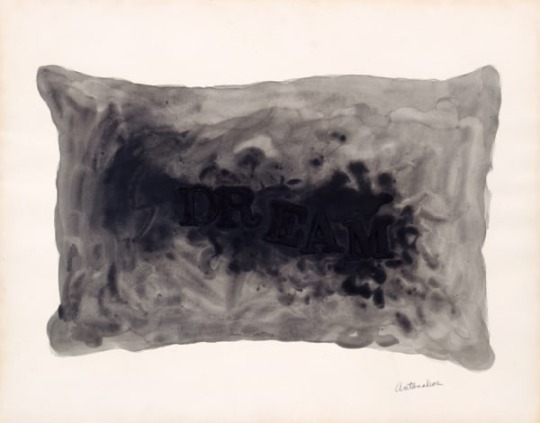

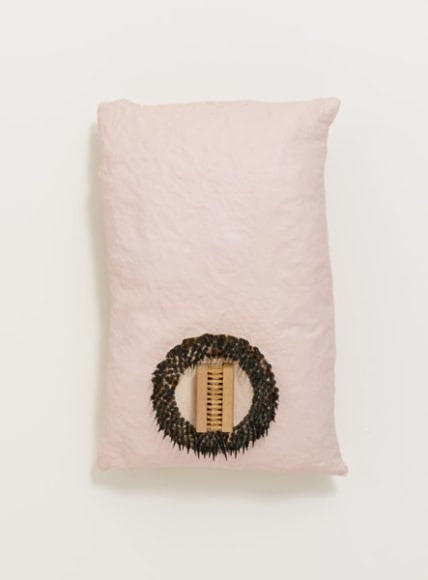

Stephen Antonakos: Pillows
PRESS RELEASE
January 13 – February 24, 2023
Bookstein Projects is pleased to announce an exhibition of Antonakos's Pillow series from the dynamic early Sixties, a period marked by the powerful emergence of both Pop Art and Minimalism. The series was first installed at New York's Byron Gallery in 1964, again at the exhibition organized by Houston's Contemporary Art Museum in 1971 and most recently at Lori Bookstein Fine Art in 2013. This is the artist's sixth solo show with Bookstein Projects.
The gallery is also pleased to announce the forthcoming monograph, Stephen Antonakos: Neon and Geometry, published by Rizzoli with a new essay by David Ebony. The book will be available in the fall of 2023.
From our current perspective, the Pillows may be understood within the long development of European found-object and assemblage traditions, particularly from Miro to Burri and on through to the contemporary work of such great American artists as Bontecou, Rauschenberg, and Chamberlain. The Pillows' other essential context is their creation specifically at the temporal intersection of the emergence of both Pop and Minimalism – nearly simultaneous movements surging in very dissimilar directions.
By the early Sixties Antonakos had left behind his hand-made Constructions and "Sewlages" and was working with non-referential, abstract geometry in neon, his signature medium. Suddenly, unexpectedly, at this pivotal moment there was a detour into a unique series of profoundly personal, nighttime compulsions involving pillows and – once again – found media. Some of the elements are presented "as is" and others are variously painted, manipulated, or even hidden beneath their pillowcases. The rush lasted over a year. Each Pillow reverberates with inner emotional, psychological subtexts. Perhaps more radical than even their most visceral operations is their displacement from human contact and the horizontal to their exposed vertical positions on the wall. This change from private to public recalls Rauschenberg's famous "Bed," but the Pillows have also gone through a lot on the way.
Asked about the "detour" into his distinct and distinctly strange constellation of Pillows, Antonakos said, "It squeezed me, it had me in its grip. I was going somewhere else but it wound me up and pulled me into its coil. I ricocheted from one to the next without rest, without awakening." This does not sound like Antonakos, and the Pillows don't look like Antonakos either – at least not at first. Yet the compelling unconscious force that produced these urgent, almost automatic, handmade objects is upon further consideration quite similar to the unmediated, direct process that has informed his decisions and his hand throughout the more than five decades of neon installations, Panels, and drawings since then.
The intensity and immediacy of these profoundly internal works, for all their tortured, nocturnal content, still show the tender, succinct hand of the artist resisting – with various results – the violent. In the cuts, the bristling areas of nails, the geometric contortions of plumbing pipes, the buttons, rods, and other words and objects revealed or hidden; Antonakos's central formalism can be recognized. For all the vivid yet ambiguous emotional content, these real things in real spaces are shaped not only by internal pressures, but by his natural, deep-seated formal rigor.
5 notes
·
View notes
Text
Loving You is a Losing Game
read it on the AO3 at https://ift.tt/iLYlGM7
by dropofink
Is it love or lust? Different cultures, different morals, and different gods. They meet in the midst of battle.
A viking AU no one asked for.
Words: 1158, Chapters: 1/?, Language: English
Fandoms: Rizzoli & Isles
Rating: Explicit
Warnings: Graphic Depictions Of Violence, Major Character Death, Rape/Non-Con
Categories: F/F
Characters: Maura Isles, Jane Rizzoli
Relationships: Maura Isles/Jane Rizzoli
Additional Tags: Enemies to Lovers, Implied/Referenced Rape/Non-con, Internalized Homophobia
read it on the AO3 at https://ift.tt/iLYlGM7
12 notes
·
View notes
Note
Hi, I've read your Rizzoli & Isles fanfics and really enjoy the way you write the characters.
Do you find it easier to write Jane or Maura?
Hello! First of all, thank you. ☺️
I find Maura much easier to write. How I imagine her internal life, while pretty different from my own, nonetheless makes perfect sense to me and I think when I’m writing from her POV I hit the balance between dialogue, action, and introspection pretty well. Whenever I write Jane, I inevitably focus too much on dialogue and plot advancement and then I have to go back and force myself to make sure I am spending enough time on her interiority.
Not surprisingly, this means that most of my smutty chapters are from Maura’s perspective, despite the fact that, uh… hm. I’ll just say again, she’s pretty different from me.
I keep working on writing Jane because both their perspectives offer different things. I love to be funny and it’s much easier to be funny (in my usual way) from Jane’s perspective. When I feel that I really nail a chapter from her POV it usually ends up being one of my favourites. Chapter 10 of AGVK, especially the second half when Jane first realizes she’s attracted to Maura, is one that I especially love from Jane’s POV.
Thanks for the ask!! I’m gonna tell myself that the fact you asked means it’s not painfully obvious that I’m better at one than the other. 🤩
#rizzoli and isles#rizzles#I’ll talk about writing these two all day#literally ask me anything#ask doomsday
10 notes
·
View notes
Text
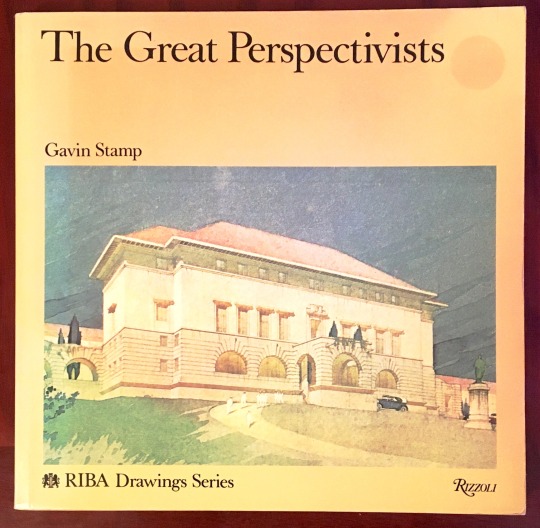

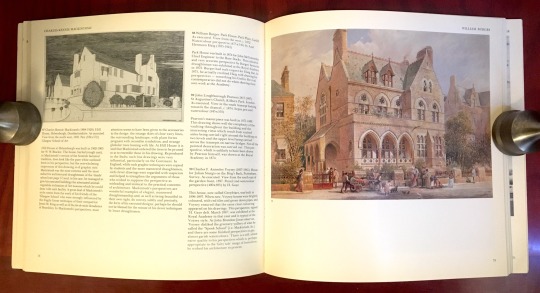


Book 422
The Great Perspectivists
Gavin Stamp
Rizzoli International Publications, Inc. 1982
Published in association with the Royal Institute of British Architects Drawings Collection, this book examines architectural drawing between 1770 and 1940, a era during which architectural perspective drawing flourished in Britain. The first full length study on the subject, this book brings together a wide range of work from an array of British architects that present idealized —not to mention beautiful—representations of structures that truly belong in the realm of art.
#bookshelf#illustrated book#library#personal library#personal collection#books#book lover#bibliophile#booklr#the great perspectivists#Gavin stamp#rizzoli#architecture
3 notes
·
View notes
Text
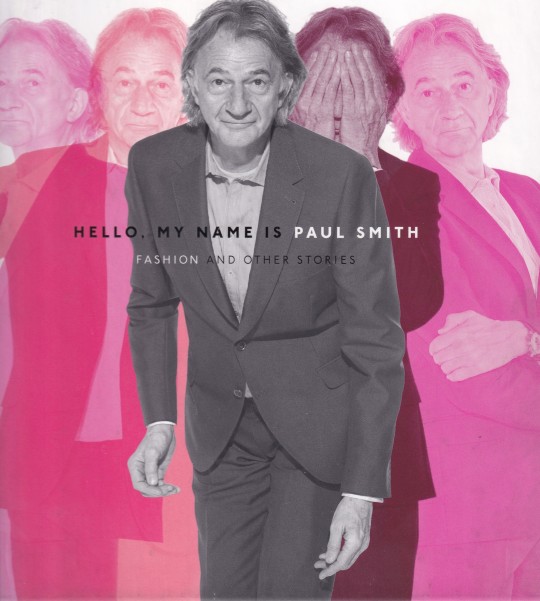



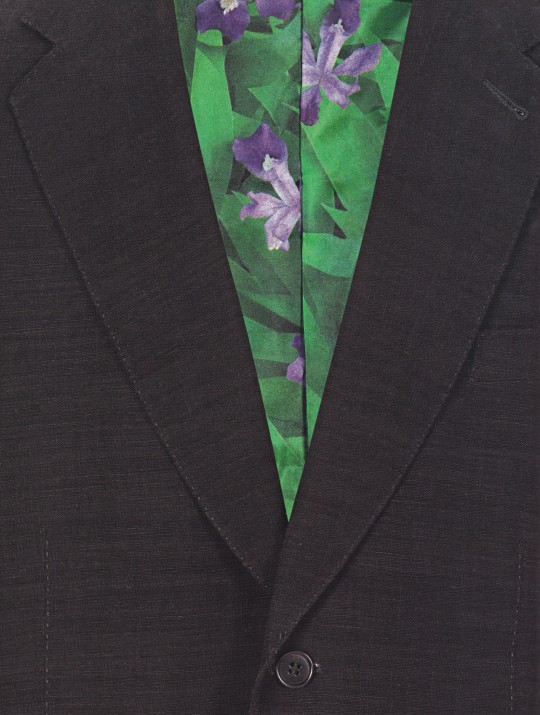
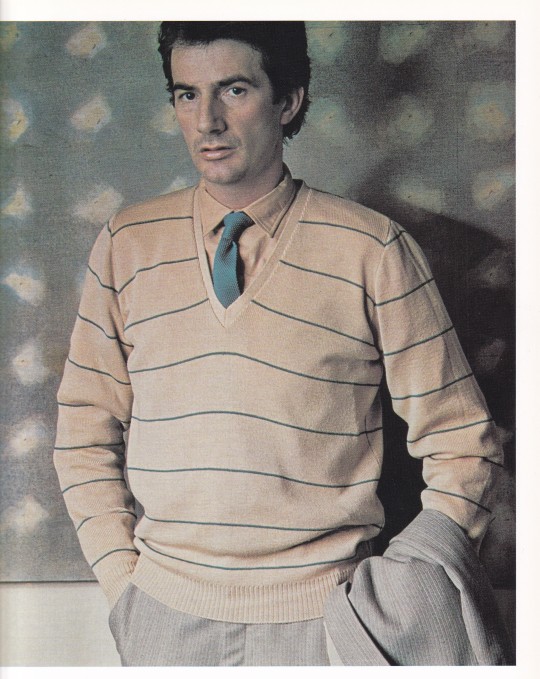
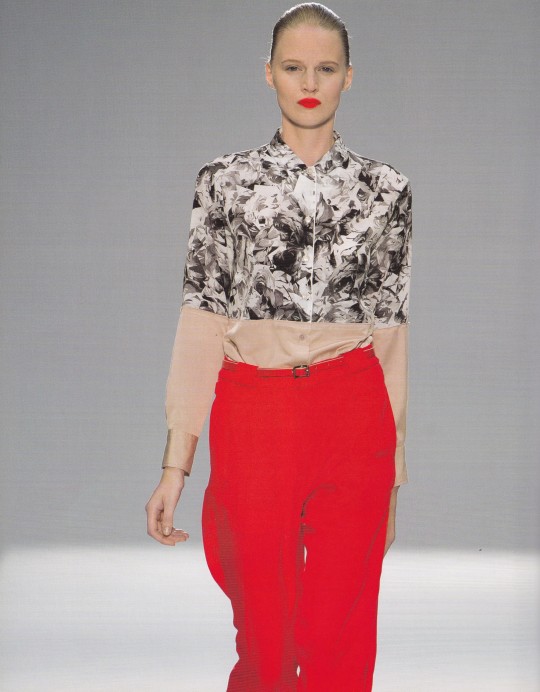
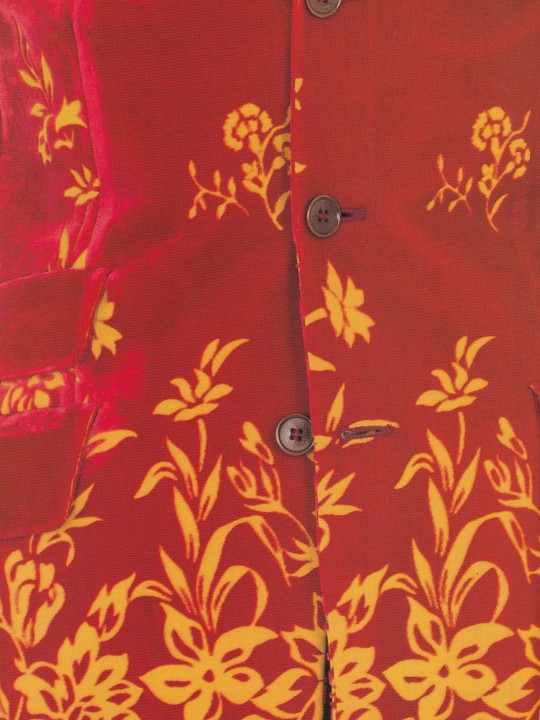
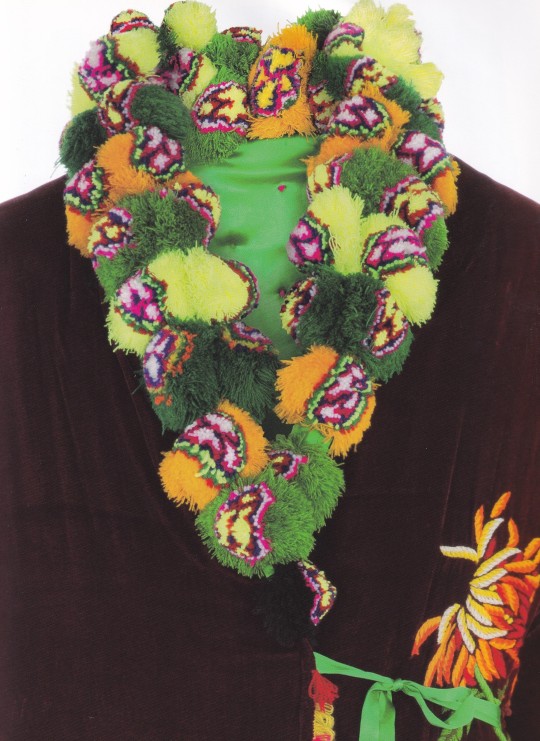



Hello, My Name is Paul Smith
Fashion and Other Stories
Paul Smith, Deyan Sudjic, Donna Loveday
Rizzoli, New York 2013, 272 pages, 27x36,4, ISBN 978-0847841585
euro 56,00
email if you want to buy [email protected]
This handsome volume celebrates over forty years of the playful and trendsetting English fashion brand and retailer Paul Smith. Always in fashion, Paul Smith is not only a preeminent fashion designer but also an international retail trendsetter who perfected a classic style that exudes a sense of English tradition combined with humor, playfulness, and mischief. This marriage of sophistication and the unexpected has given birth to a style and identity that—forty years and many collections later—remains charming, personable, and effortlessly hip. Published in association with the Design Museum, London, which is hosting a major exhibition on Paul Smith in the fall of 2013, this volume celebrates not only the line’s fashion history, collections, and collaborations but also the inspirations and obsessions that have helped to transform a small bedroom-sized shop into an innovative global forum for culture and style. Paul Smith is a full-on bright and rich visual experience, illustrated throughout with documentation of its diverse creative community and design inspirations, including Martin Parr, David Bowie, and Henry Moore, to name a few. Using hand-drawn designs, archival photographs, gorgeous original photography, and engaging essays, this colorful catalog weaves together a compelling visual tale of Paul Smith’s prestigious projects and creative processes—from behind-the-scenes to on the streets—that built this multifaceted empire of cool.
14/03/24
5 notes
·
View notes